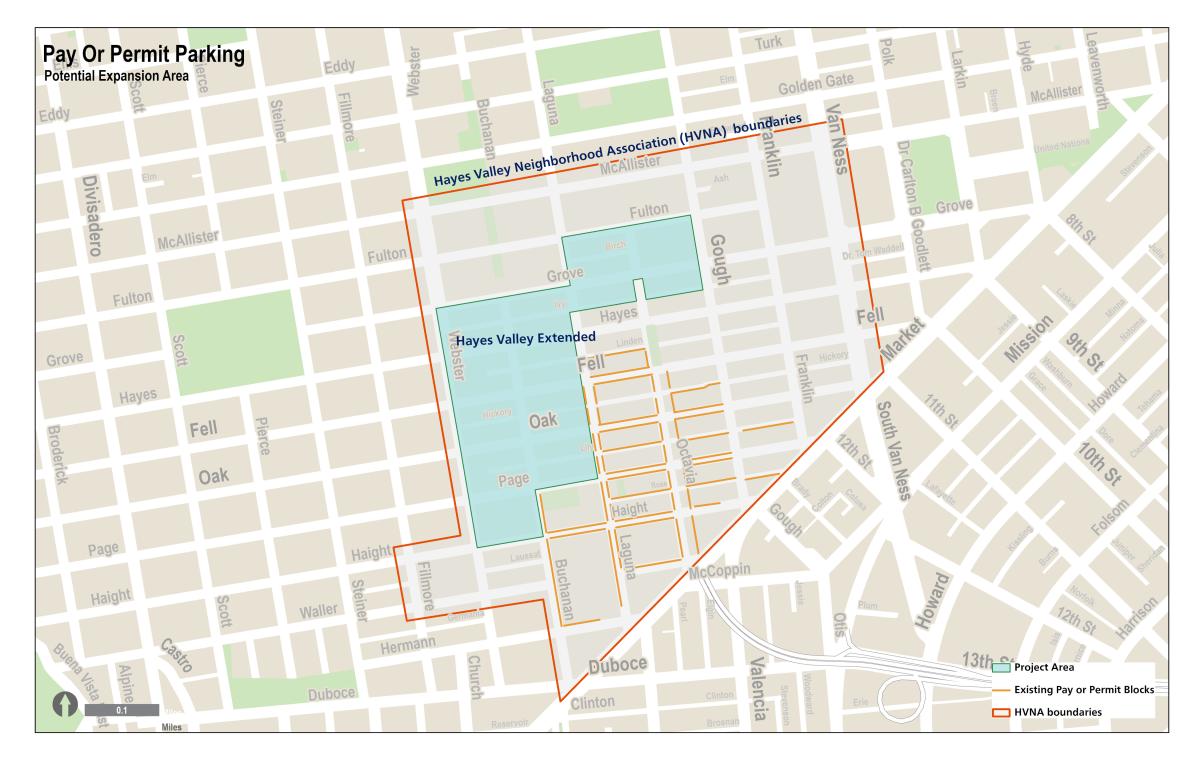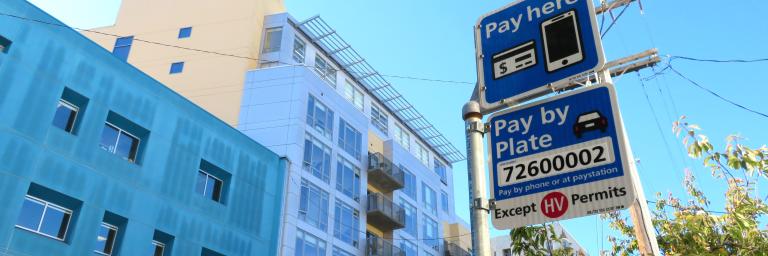At a Glance
The San Francisco Municipal Transportation Agency (SFMTA) proposes replacing visitor time limits with paid parking on Residential Permit Parking blocks in a few San Francisco neighborhoods. This regulation, called Pay or Permit Parking, makes it easier to find a place to park for both residents and visitors to neighborhoods with high parking demand. Permitholders do not have to pay on top of the cost of the permit.
Project Introduction
In 2018, the SFMTA, which oversees parking and all ground transportation in the City, added Pay or Permit Parking as a new regulation type to the longstanding Residential Parking Permit (RPP) program to better serve residents of and visitors to San Francisco’s neighborhoods. Cities have long known that charging for parking is the best tool for encouraging parking turnover and making it easier to find a place to park in commercial districts. Pay or Permit Parking combines the benefits of residential parking restrictions with the benefits of paid parking: making it easier for residents and visitors to park on blocks in high-density, high-demand residential areas near major attractions, while preserving the residential permit system and generating revenue to support transit service.
Here’s how it works for blocks with Pay or Permit Parking:
Permitholders: Park without a time limit; no payment required (beyond the annual permit fee)
Visitors: Park without a time limit; pay for desired parking time via paystation or mobile device.
Current Rates: $0.75 to $2.25 per hour.
Allowing guests to stay longer than two hours if needed ensures they can enjoy the neighborhood without the hassle of moving their car before the two-hour time limit expires. At the same time, the payment ensures that people stay only as long as they need and then make their space available to the next person. Most RPP blocks near commercial corridors are occupied by non-residents, many of whom stay longer than the posted time limits.
The SFMTA implemented Pay or Permit Parking in portions of Hayes Valley in late 2022. This initiative has successfully managed parking demand and improved parking availability. More residents can park near their homes, and visitors tend to stay for shorter periods under this regulation.
Pay or Permit Parking Benefits
Benefits for Residents: Improves the likelihood of finding parking quickly and close to home. The increased availability means that there’s less congestion and pollution from vehicles circling for a space.
Benefits for Businesses: It supports thriving business districts by making it easier for customers to find parking near commercial corridors. It also offers flexibility for employees and customers who no longer need to move their car every two hours or risk getting a pricey ticket.
Benefits for Visitors: Reduces hassle by allowing visitors to pay for parking as needed, avoiding the stress of moving their car every two hours or the risk of getting a pricey ticket. Parking is easier to find, increasing the time spent dining, shopping, or socializing. Caregiver and visitor permits will continue to be available for longer visits.
Pay or Permit Expansion Project and Timeline
In 2023, the SFMTA received a $1.5 million Local Parking Management Capital and Implementation Grant from the Metropolitan Transportation Commission (MTC) to extend this regulation into more areas. As part of the grant, the MTC will study the regulation's impact on congestion and air quality.
The SFMTA is studying expanding to additional blocks of Hayes Valley and other neighborhoods based on community interest. Outreach will continue in 2025, and staff will refine the proposal based on feedback.

Timeline
- Planning
- Current
